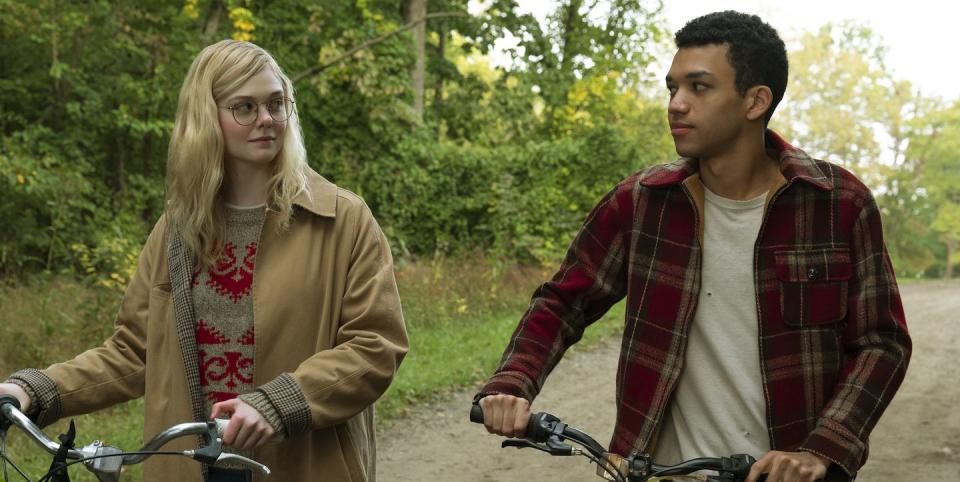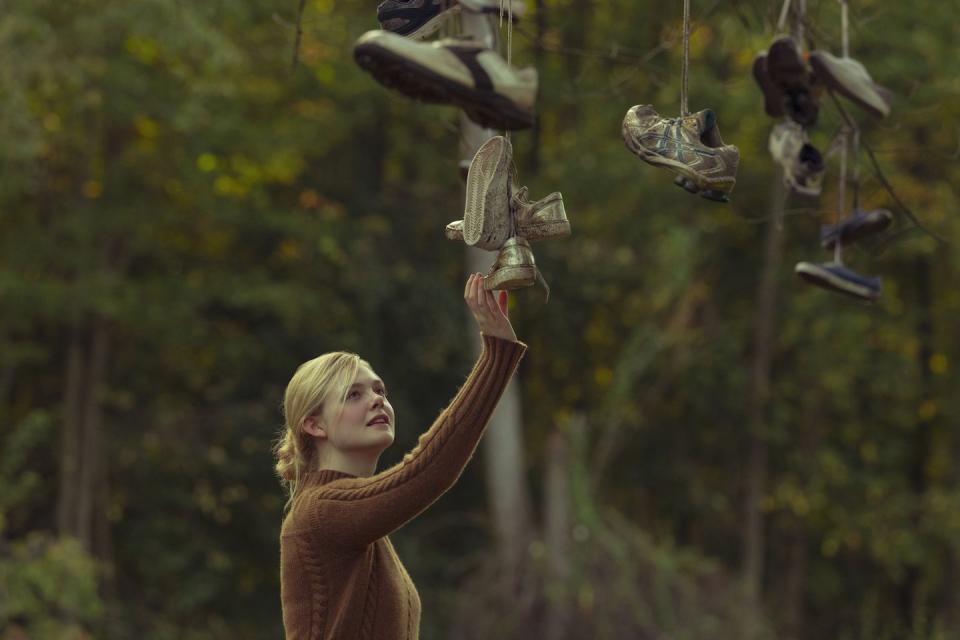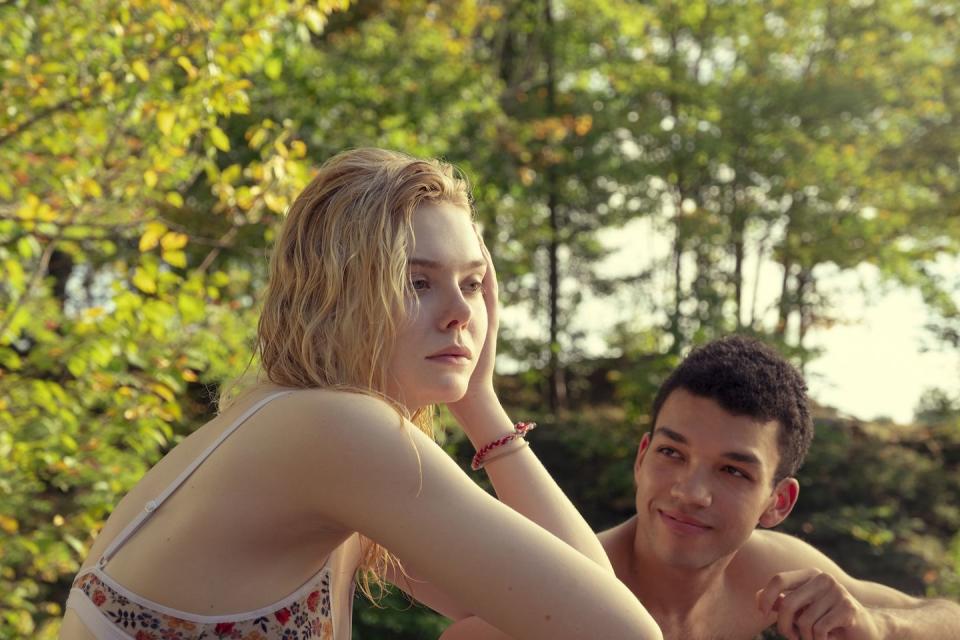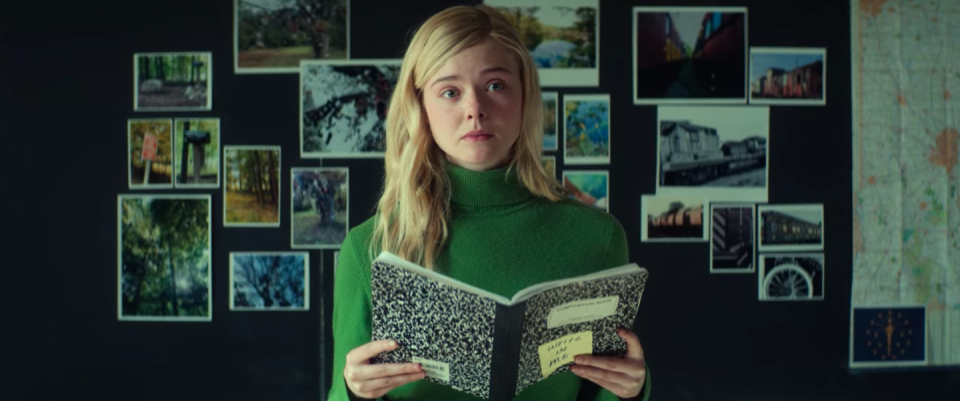Netflix's All The Bright Places had a darker original ending

All The Bright Places has arrived on Netflix just in time for a weekend watch. If the title sounds vaguely familiar, don't worry you're not having deja vu, it's because the movie is based on the novel by the same name by Jenny Niven.
Niven also wrote the screenplay for the movie adaptation, so whatever changes she made to her original story were purposeful and not without reasons – whatever they were.
In a book, there can be room for more distressing scenes to breath, readers aren't forced to jump from visually traumatic scene to traumatic scene.
In All The Bright Places, the consistent and ceaseless trauma-rehash becomes a bit like misery-porn, but it could have been much more bleak if Niven had kept her novel's ending in the film. Warning: spoilers for All The Bright Places from here.
Ultimately, both plots are very similar. Two teenagers, each dealing with their grief and trauma, find love and acceptance in each other. But ultimately only one can heal (Violet, played by Elle Fanning), while the other (Finch, played by Justice Smith) succumbs to the darker impulses due to his mental illness.
The two connect as they wander around Indiana for a school project, exploring sights that are important to them and Indiana's history. During one such wander, the two stay out all night and Violet's parents forbid Finch from seeing her again.
From this point, the two stories diverge most dramatically.

The movie version of All The Bright Places has Finch disappear for several days, as a result of being told not to see Violet anymore, but before resurfacing he attends a support group where he runs into a school mate, Amanda.
Finch comes home to find Violet there, but she effectively breaks up with him due to the lack of communication from him during his absence. The day after their break up, Finch doesn't come to school. Violet calls him, but gets his voicemail.
This leads her to open up to her dad about Finch's importance in her life, and he asks if there's anywhere Finch might go. Violet heads to the Blue Hole (one of their wander sites), where she finds his car abandoned and realises he has drowned himself.

She calls emergency services and later is shown attending his funeral. This is followed by a scene of her in his bedroom. Violet finds his journal and a map with their final location, a chapel built to memorialise those killed in car accidents (like her sister).
In the logbook at the chapel, Finch has written: I was here - TF. Afterwards, Violet gives a presentation in class about Finch and their wanderings.
The film ends as the book does: with Violet swimming at the Blue Hole.

The novel sees Finch struggle with persistent thoughts of suicide. The movie version doesn't dig quite as deeply into the all-consuming thoughts, but rather focusses on his undiagnosed mental illness through his erratic behaviour.
Being separated from Violet (at her parents' orders) causes Finch to spiral he is subsequently expelled from school. He still sees Violet occasionally but can hide his worsening depression from her.
On a bad night, Finch takes a handful of sleeping pills, but regrets it and takes himself to A&E to get his stomach pumped. This is what sparks him to attend a local support group where he runs into his school-mate Amanda.

He tells the group about his attempt to end his life, which Amanda recounts to Violet. As a result, Violet tries to help Finch and this is what precipitates their big blow-up fight. After the fight, Finch runs away from home.
While Violet is looking for him, she gets mysterious texts from him but can't find him. A month after his disappearance, everyone he knows receives an email from him saying goodbye.
This sends Violet into a panic, and she searches for Finch again, heading to the Blue Hole, one of their wander sites and a beautiful swimming spot, where she discovers he has drowned himself.

In time, Violet figures out what Finch's mysterious texts meant and she goes to the final location they were meant to visit, the chapel. There she discovers sheet music and lyrics for a song Finch wrote about her. She returns to the Blue Hole and swims, like in the film.
Niven decided to condense the plot and remove the more explicit references to suicide, and we have to trust in her reasons for those decisions.
We would encourage anyone who identifies with the topics raised in this article to reach out. Organisations who can offer support include Samaritans on 116 123 (www.samaritans.org) or Mind on 0300 123 3393 (www.mind.org.uk). Readers in the US are encouraged to visit mentalhealth.gov or the American Foundation for Suicide Prevention.
All The Bright Places is streaming on Netflix now.
Digital Spy now has a newsletter – sign up to get it sent straight to your inbox.
Want up-to-the-minute entertainment news and features? Just hit 'Like' on our Digital Spy Facebook page and 'Follow' on our @digitalspy Instagram and Twitter accounts.
You Might Also Like

